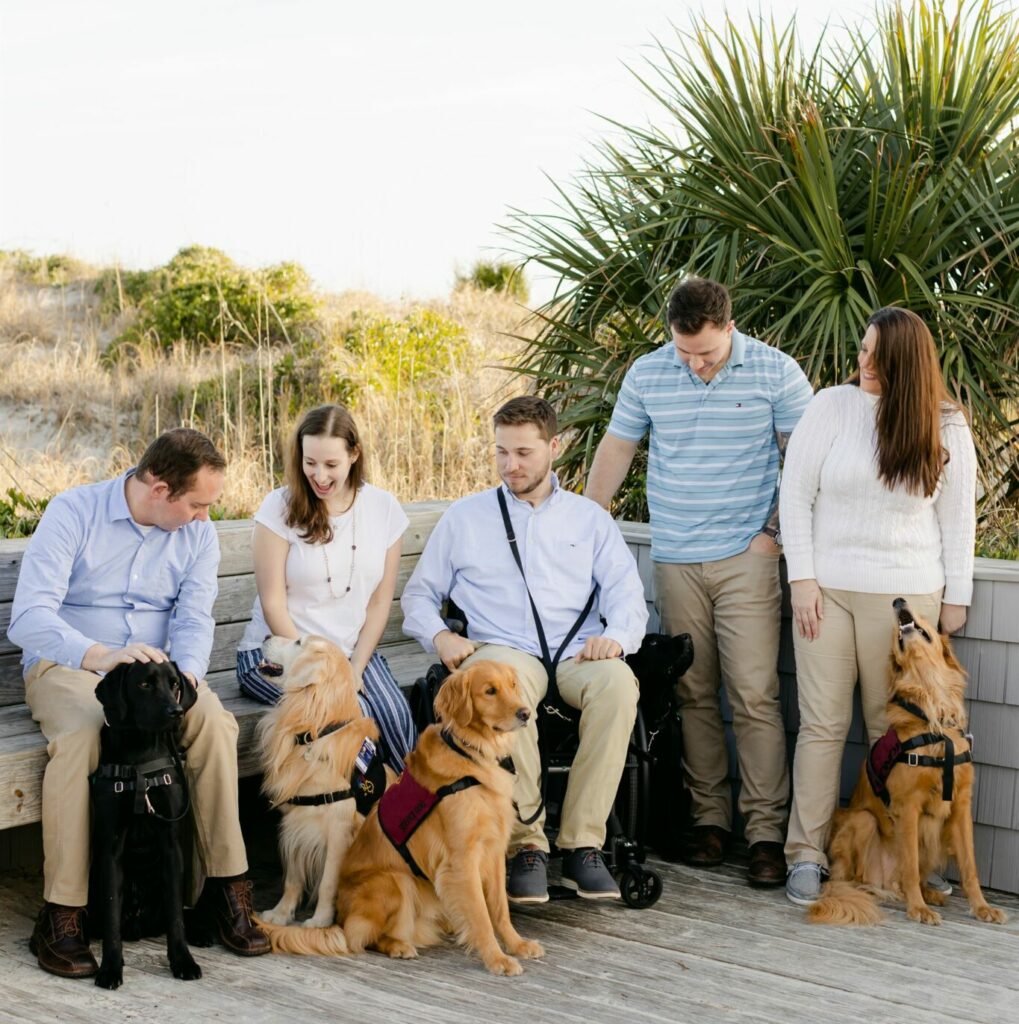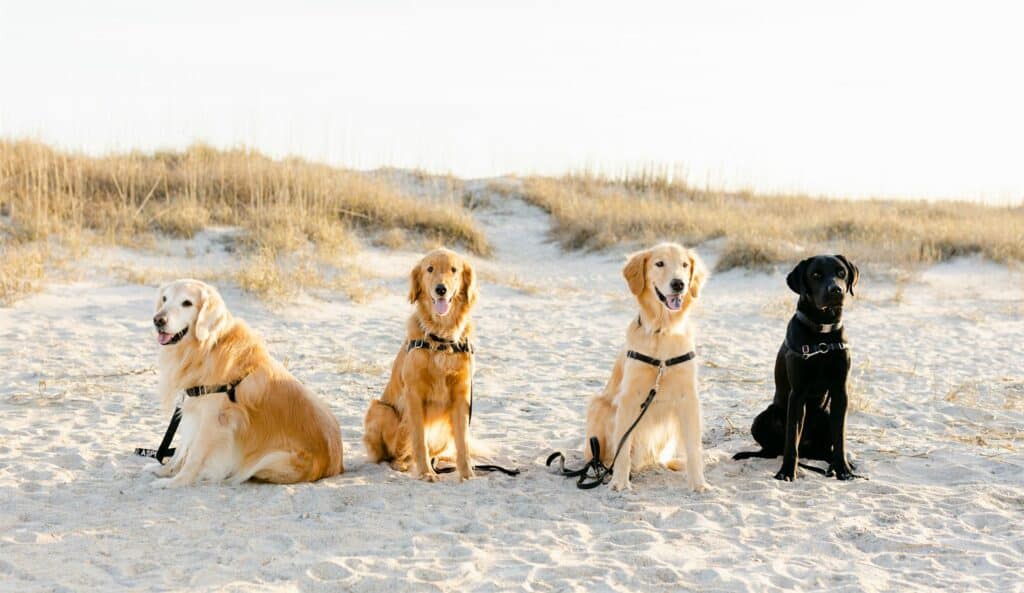
Paws4people®️
Our Service Dog Training Process
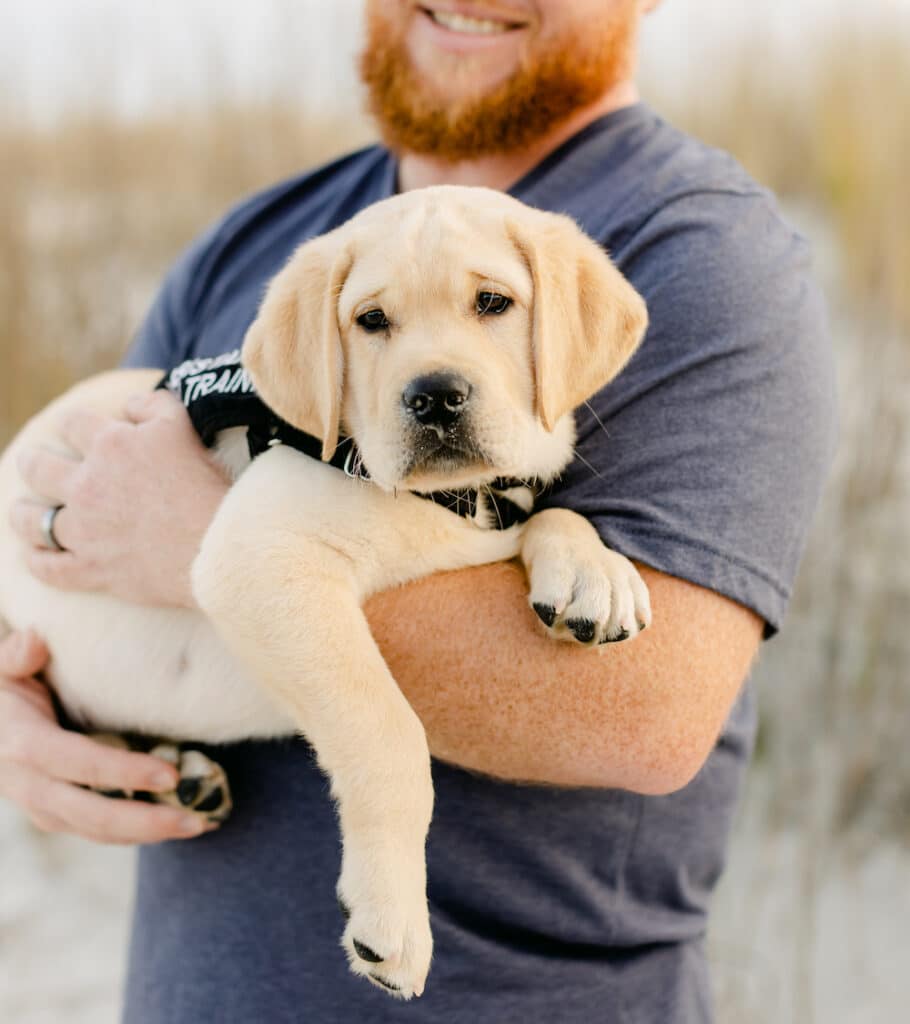
Birth to 3 weeks
Whelping
The Service Dog training process begins with neurological stimulation and stress control conditioning involves exposing the Puppies to a series of different stimuli, postures, physical restrictions, physical stimulation, and so on for the first three weeks.
Whelping:
Neurological stimulation and stress control conditioning involves exposing the Puppies to a series of different stimuli, postures, physical restrictions, physical stimulation, and so on for the first three weeks.
By week three, the Puppies’ eyes have been open and they are much more ambulatory and exploratory, and aware of their environment. At this point, the “rule of sevens,” which we extend greatly in our own system, takes place.
The “rule of sevens” involves exposing the Puppies to as many different sensory experiences and textures as possible to avoid the age-old “dog scared of the white tile floor at the vet,” for example.
Also by week three, the Puppies begin more “formal” training sessions, using puppy mush food as treats to teach them the theory of food motivation and to begin their associations with certain body postures, especially “sit.” Many people who came to visit the last Puppies were amazed that at 4 weeks old, the Puppies were mostly living during the day outside of their whelping box, playing with toys and obstacles, not requiring much supervision and not creating any destruction.
These Puppies are trained to potty pad areas, even at 4 weeks old. When feeding, or giving them attention, they are able to sit in a semi-circle…without a Puppy jumping up or biting.
These are all things they are capable of learning at such a young age – things that many puppies don’t even begin to learn until they go home at age 8 weeks or so. Our Puppies are already 4 weeks ahead of most training curves and this is one reason we have such an affinity for our internal Breeding Program.
The last aspect of the whelping process that is very different about paws4people is that we allow 100% natural weaning process.
We have found over much time and trial that the very fascinating process of the mother creating the boundaries of allowing the Puppies to eat or not eat from her as they age is irreplaceable.
This process teaches:
- social skills;
- dog body language;
- proper play postures and behaviors; and
- proper assertion/submission tactics.
It reduces inter-litter dominance behaviors and leaves us with litters that are almost evenly beta, without the alpha puppy and the picked-on “runt.”
3-20 weeks
Puppy Development
Here, the focus shifts on intense socialization and exposure for the Puppies. It is widely accepted within dog training and psychology that the first 16 weeks of a puppy’s life have a permanent impact on their temperament, psyche, and trainability.
Puppy Development
At this age, Puppies begin the “Puppy Development” phase of training.
Here, the focus shifts on intense socialization and exposure for the Puppies. It is widely accepted within dog training and psychology that the first 16 weeks of a puppy’s life have a permanent impact on their temperament, psyche, and trainability. Therefore, we utilize this time to expose the Puppies to as many different positive experiences as humanly possible.
A network of volunteers, staff, and families assist us with taking the Puppies on outings so that they are exposed to as many textures, sights, and sounds as possible during this imprinting stage. We end up with extremely social, low-arousal, and low-stress Puppies, ready to begin their specialized training!

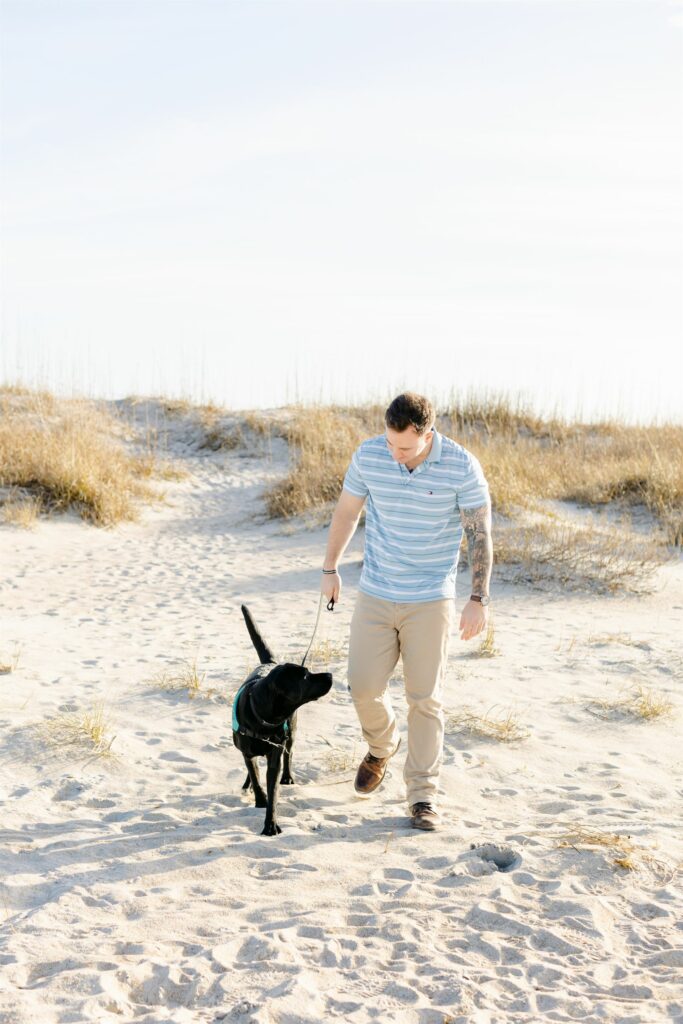
5-15 months
Obedience and Skills Training
Specially trained Inmate Trainers at 2 West Virginia prisons are chosen to train Dogs in basic and advanced obedience skills.
paws4prisons®️ Specialized Training.
Puppies enter our paws4prisons Training Program and remain there until about the age of 12-16 months. Inside prison, each Puppy is assigned to an Inmate Trainer or Inmate Trainer Team who is responsible for care and training 24/7 until program completion.
Specially trained Inmate Trainers at 2 West Virginia prisons are chosen to train Dogs in basic and advanced obedience skills.
The extremely powerful rehabilitation forces at work while training Dogs is too long a story to be told here.
12 months

Bump
paws4prisons®️ Program
A “Bump” is the process of a dog choosing their partner from our selected Potential Clients.
A “Bump” is a process of a Dog choosing their partner from our selected Potential Clients. Bumps occur at our headquarters campus, ADDIE’S Way. Pre-selected Dogs are introduced to each Potential Client while staff watch for bonding and matching behaviors. We are big believers that the Dog chooses their person.

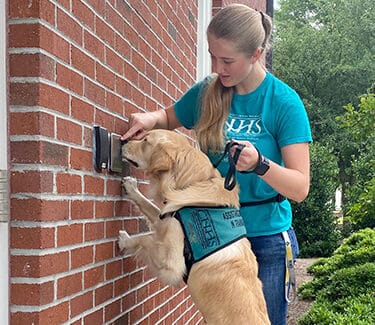
16-24 months
Public Access or Facility-Based Training
During this stage of training, paws4people trainers certified in Public Access Training take Dogs to many different environments such as restaurants, retail stores, movie theaters, public transportation, etc. as part of their public access training.
Public Access or Facility-based Training
During this stage of training, paws4people trainers certified in Public Access Training take Dogs to many different environments such as restaurants, retail stores, movie theaters, public transportation, etc. as part of their public access training. A majority of our Public Access Training is done within our UNCW/paws4people Assistance Dog Training Program.
18-24 months
Client or Handler Transfer Training
Within the paws4people and paws4vets Programs, service dog training continues with the Client learning to utilize their Assistance Dog to control, regulate, and mitigate™ their symptoms, which is also known as Intervention Transfer Training™ (ITT).
Within the paws4people and paws4vets Programs, the process of a Conditional Client learning to utilize their Service Dog to Control, Regulate, and Mitigate® their symptoms is known as Intervention Transfer Training®(ITT). ITT is conducted by highly experienced and specially trained staff and trainers, as well as Peer Mentors. Peer Mentors are paws4people & paws4vets Certified Clients who have successfully completed ITT and are now working full-time with their Service Dogs to improve and enhance their daily living.
ITT occurs at our headquarters, ADDIE’S Way, as well as at public locations in and around our home of Castle Hayne, North Carolina. Clients participating in ITT are required to stay in the dormitory during training sessions. Some sessions will also include support partners or caregivers. Clients complete their training as a cohort, staying together in the dorm, having meals together, and participating in training outings together.
ITT is conducted using the mutual aid model, wherein group members are the providers as well as the recipients of the benefits of the services. During ITT, we recognize that the experiences, strengths, and perspectives of each group member should be drawn upon to help other members of the group. We also draw heavily on the helper-theory principle, similar to Alcoholics Anonymous, wherein helping others helps the helper. ITT is a peer-to-peer activity lead by Service Dog experts, not a medical treatment by medical providers or a therapeutic intervention lead by mental health practitioners. We have found that this offers directness and authenticity that often affords our Clients progress they have not been able to find within medical settings, traditional therapy, or other mental health intervention. The ITT process promotes resilience and growth in Clients who are living with life-altering disabilities and who have experienced traumatic events. For each Client, the ITT process helps them to build a fuller, more independent life. Each Client is building bonds and deepening connections, decreasing isolation, becoming more social, and increasing self-esteem, confidence, and feelings of self-worth. Each Client inspires and motivates others to find a way forward and to deal with life-altering disabilities.
Handler Training Handler Training is the process whereby Conditional Handlers of Dogs learn to utilize and integrate their Facility Dogs into the Handler’s profession and workplace setting(s). Handlers are incorporating Animal Assisted Intervention into the services that they provide to individuals and/or their clientele.
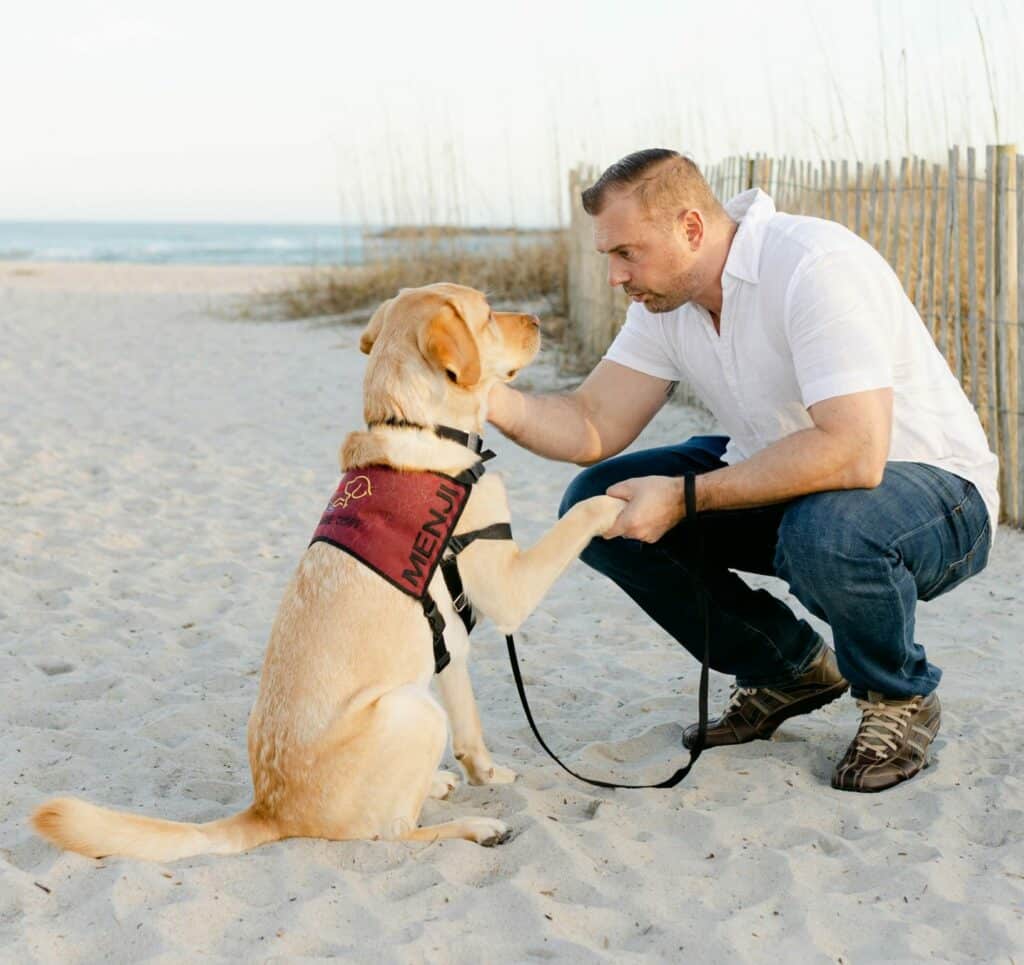
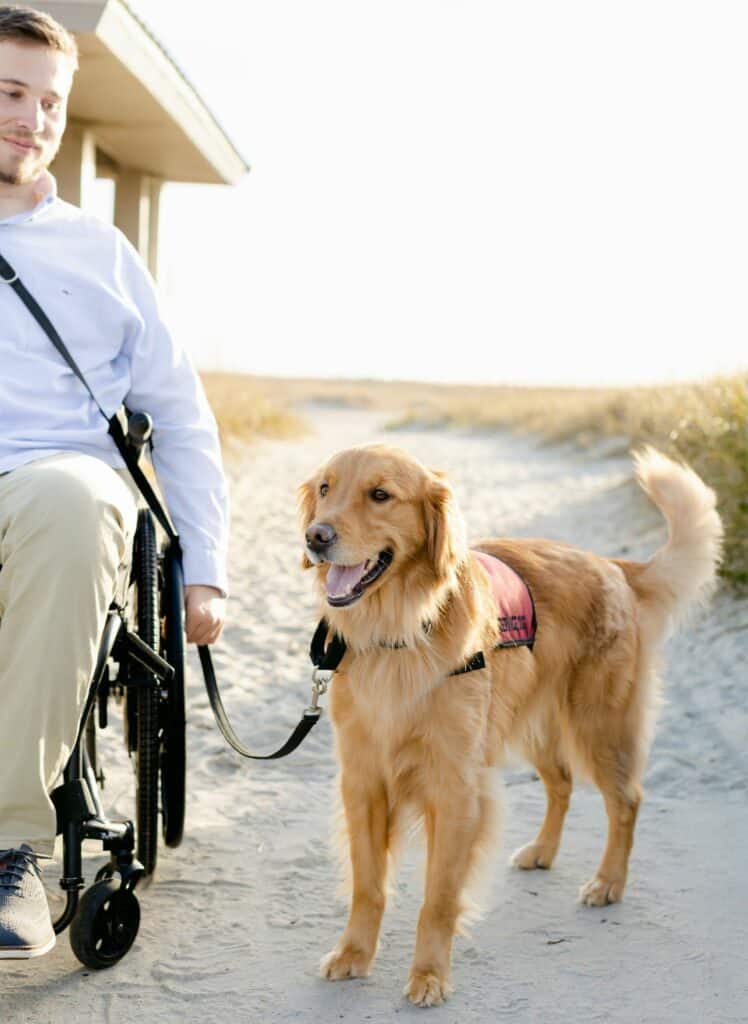
Testing
Black and Red or Green Vest Testing
Upon Black Vesting, the Client or Handler receives custody of the Dog. We liken this to their “Learner’s Permit.”
Home
Dog Goes Home with Client or Handler
Dogs are owned by the organization for the duration of their career, and are placed with the Client or Handler on a custody basis.
Dogs are owned by the organization for the duration of their career, and are placed with the Client or Handler on a custody basis. This allows the organization to maintain both liability and health insurance policies on each dog, as well as to revoke custody if it is ever in the best interest and safety of the Dog, Client or Handler, or the organization. Service Dogs are required to pass a Public Access Test, temperament evaluation, and health inspection annually for their career. Facility Dogs are required to pass a Facility Observation Test, temperament evaluation, and a health inspection annually for their career. Upon retirement, the Service or Facility Dog remains with the Client or Handler and is transferred to “pet” status. If the Client or Handler chooses to pursue a successor dog, they are prioritized into the Bump process.
